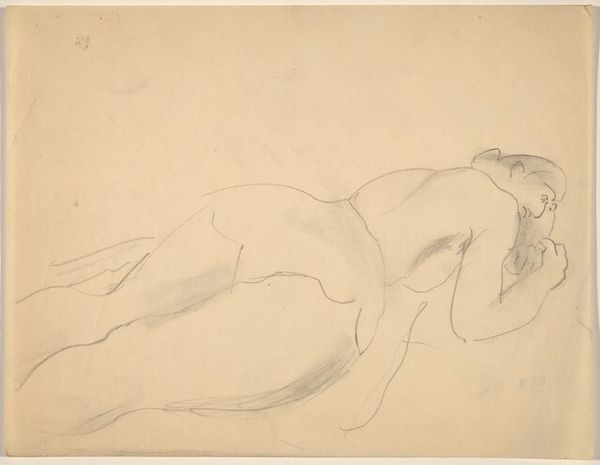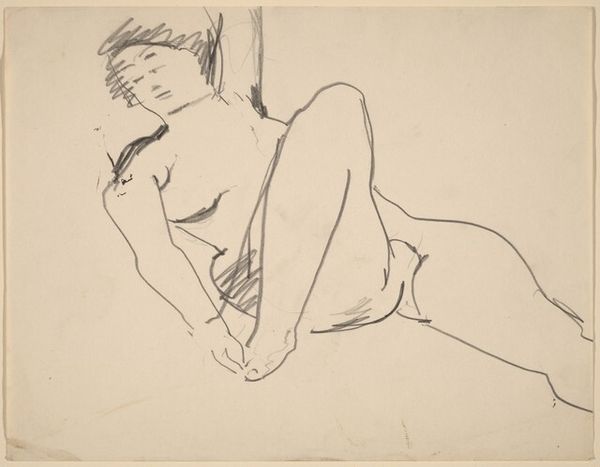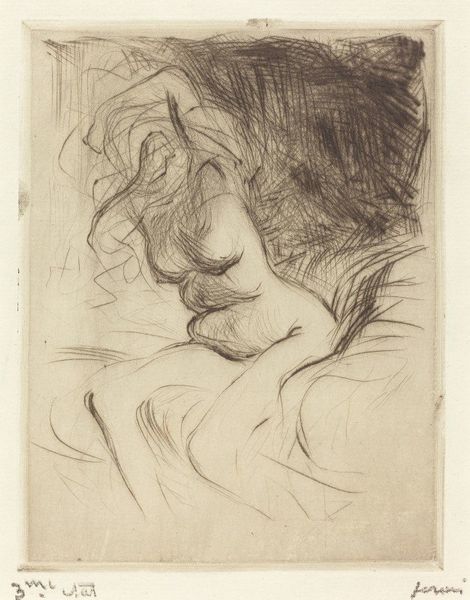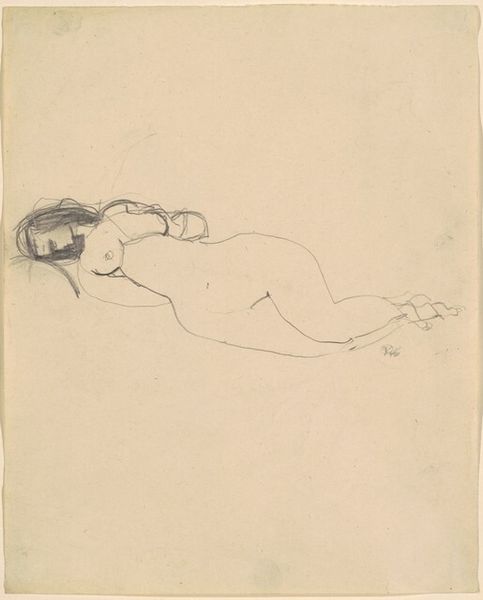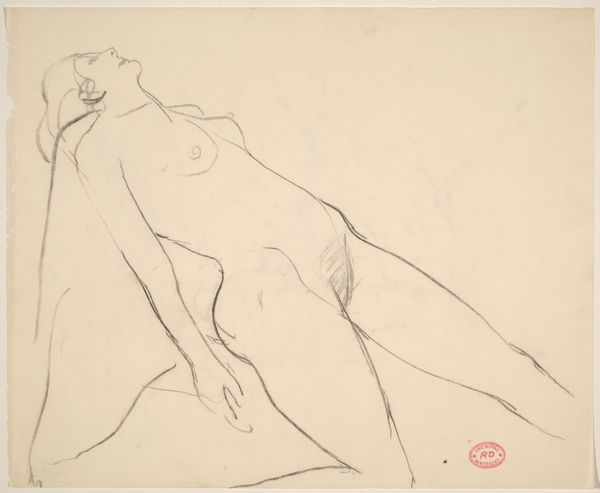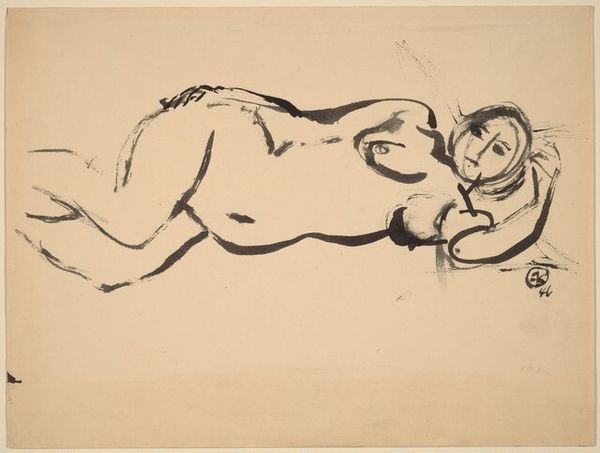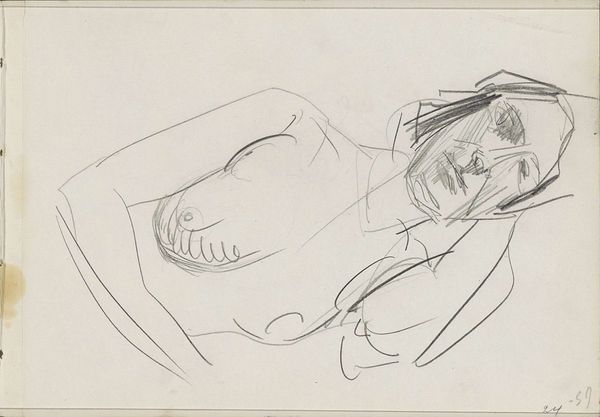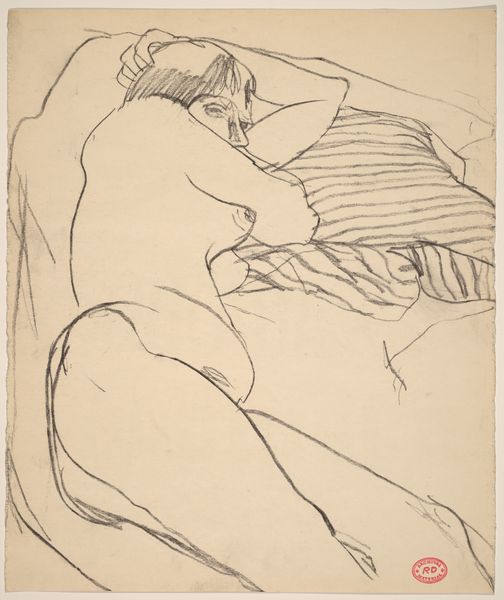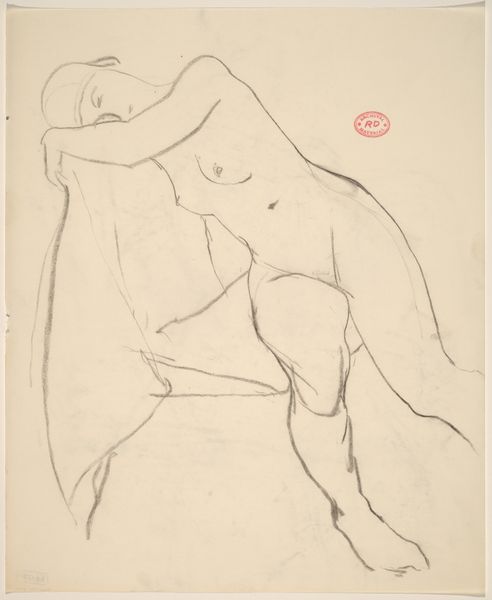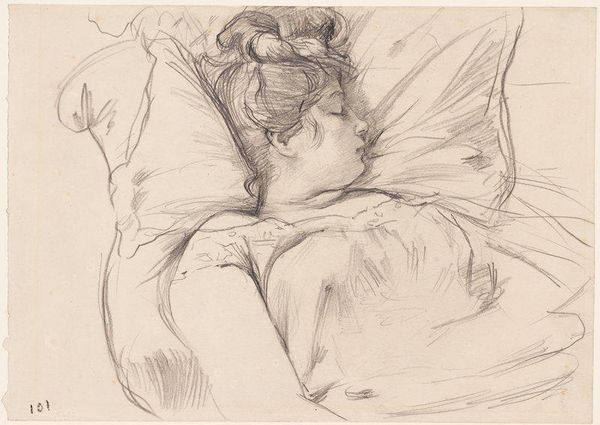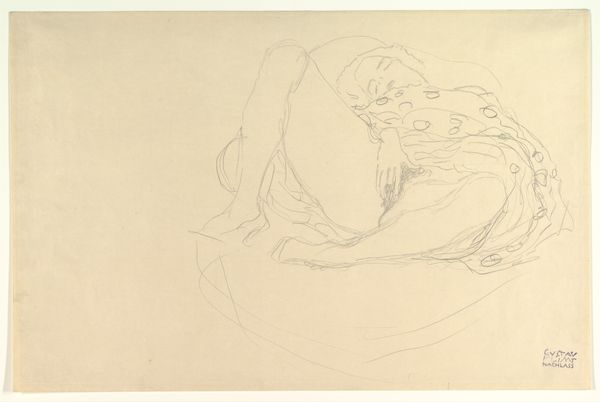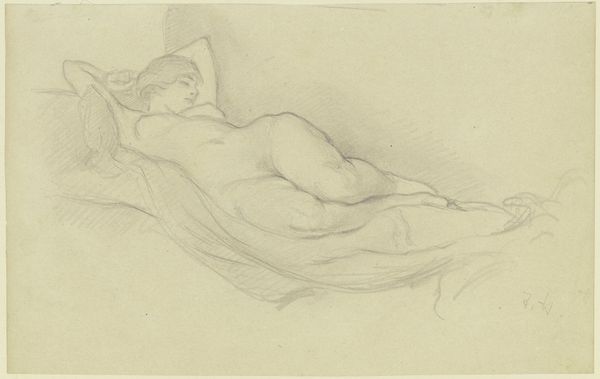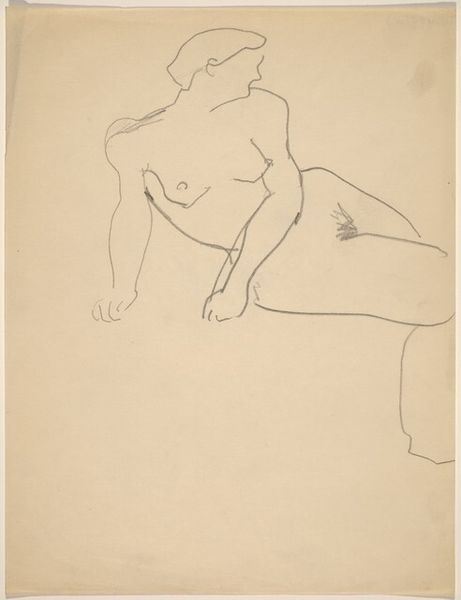
Berthe's Sister with a Lover (La Soeur de Berthe avec un amant) c. 1927 - 1929
0:00
0:00
drawing, print, pencil
#
portrait
#
drawing
# print
#
pencil sketch
#
study drawing
#
intimism
#
pencil
#
portrait drawing
#
nude
Copyright: National Gallery of Art: CC0 1.0
Curator: The drawing we’re looking at is titled "Berthe's Sister with a Lover," dating from around 1927 to 1929. It's the work of André Dunoyer de Segonzac, rendered in pencil. Editor: It's a very intimate scene, isn’t it? The pale ground and delicate pencil work lends an almost ethereal quality, though the direct gaze of the subject keeps it grounded. Curator: Intimacy is key. De Segonzac was active during a fascinating period, socially and politically. As women increasingly navigated personal autonomy, depictions of female desire or sexuality became potent symbols. This portrayal transcends mere representation; it's an assertion. We could delve into queer theory for a modern lens… Editor: Before we go too far down the rabbit hole of theory, notice the almost classical positioning of the figures – a familiar Venus-like pose. The slight sketch of the male figure lurking behind creates a sense of watchful presence. A protector? An intruder? Perhaps an almost chthonic deity, presiding over this intimate moment. The drawing is full of subtle symbolism. Curator: Good eye. I think you’re onto something about the protector/intruder paradox. Post-war anxieties played out in evolving depictions of relationships, particularly through gendered power dynamics. De Segonzac was a keen observer of these subtle societal shifts. Editor: The way the lines gently contour the bodies—especially her gaze. The figures almost melt into one another. This brings up enduring notions of love, sensuality, and human connection across cultures, from ancient fertility figures to modern representations of relationships. Curator: Yes, by considering not only how these images are produced, but for whom, we can begin to understand how certain ideals are upheld or disrupted through representation itself. De Segonzac presents the female gaze as challenging, and thus resists a flattening patriarchal interpretation. Editor: Seeing it this way has completely shifted my understanding of the piece. It's more layered and complicated than a first glance suggests. Thank you. Curator: It’s precisely that layering and complication that compels further exploration. Art must constantly confront our assumptions and preconceived notions about the human experience.
Comments
No comments
Be the first to comment and join the conversation on the ultimate creative platform.
